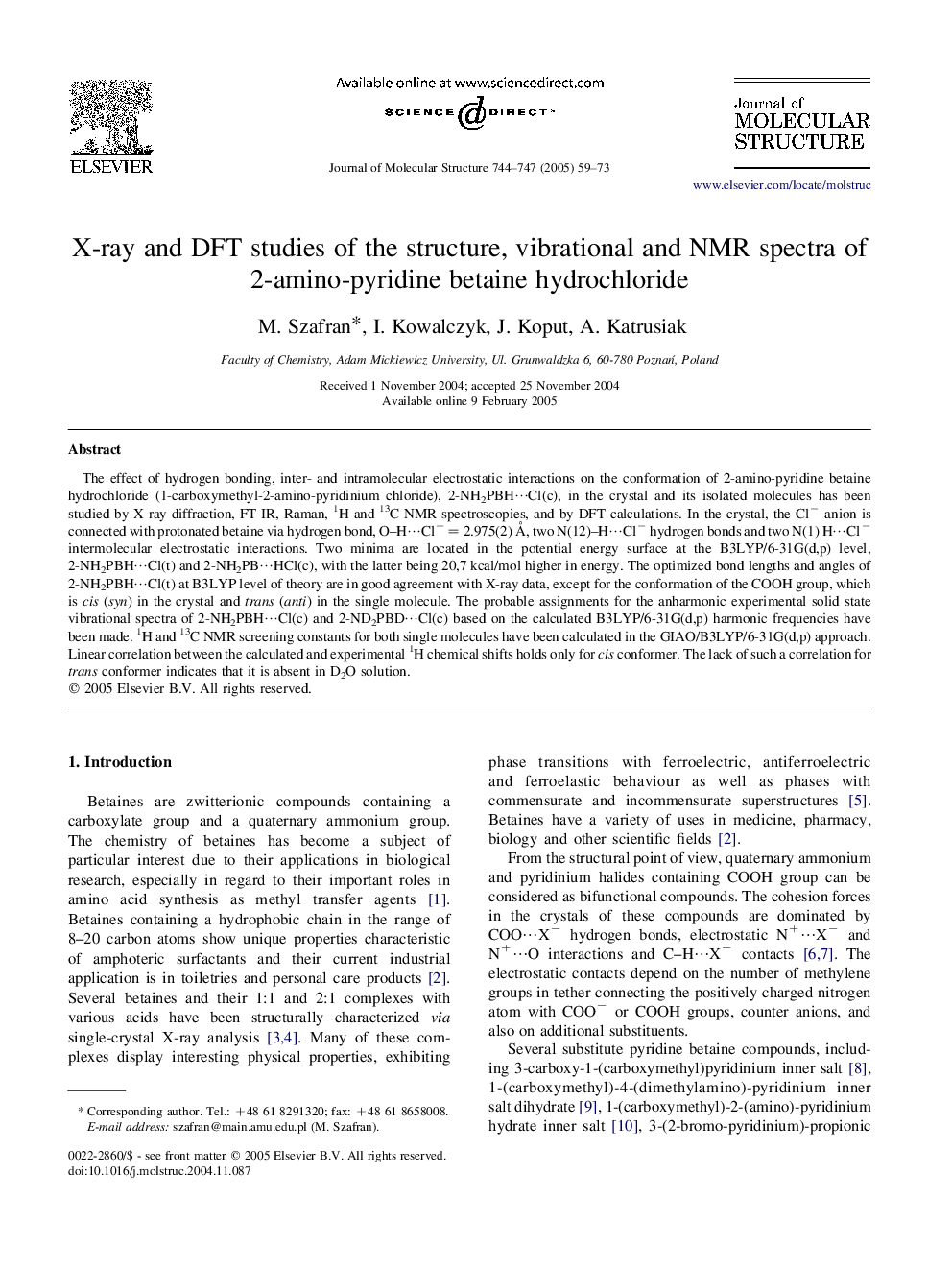| Article ID | Journal | Published Year | Pages | File Type |
|---|---|---|---|---|
| 9770040 | Journal of Molecular Structure | 2005 | 15 Pages |
Abstract
The effect of hydrogen bonding, inter- and intramolecular electrostatic interactions on the conformation of 2-amino-pyridine betaine hydrochloride (1-carboxymethyl-2-amino-pyridinium chloride), 2-NH2PBHâ¯Cl(c), in the crystal and its isolated molecules has been studied by X-ray diffraction, FT-IR, Raman, 1H and 13C NMR spectroscopies, and by DFT calculations. In the crystal, the Clâ anion is connected with protonated betaine via hydrogen bond, O-Hâ¯Clâ= 2.975(2) Ã
, two N(12)-Hâ¯Clâ hydrogen bonds and two N(1) Hâ¯Clâ intermolecular electrostatic interactions. Two minima are located in the potential energy surface at the B3LYP/6-31G(d,p) level, 2-NH2PBHâ¯Cl(t) and 2-NH2PBâ¯HCl(c), with the latter being 20,7 kcal/mol higher in energy. The optimized bond lengths and angles of 2-NH2PBHâ¯Cl(t) at B3LYP level of theory are in good agreement with X-ray data, except for the conformation of the COOH group, which is cis (syn) in the crystal and trans (anti) in the single molecule. The probable assignments for the anharmonic experimental solid state vibrational spectra of 2-NH2PBHâ¯Cl(c) and 2-ND2PBDâ¯Cl(c) based on the calculated B3LYP/6-31G(d,p) harmonic frequencies have been made. 1H and 13C NMR screening constants for both single molecules have been calculated in the GIAO/B3LYP/6-31G(d,p) approach. Linear correlation between the calculated and experimental 1H chemical shifts holds only for cis conformer. The lack of such a correlation for trans conformer indicates that it is absent in D2O solution.
Related Topics
Physical Sciences and Engineering
Chemistry
Organic Chemistry
Authors
M. Szafran, I. Kowalczyk, J. Koput, A. Katrusiak,
